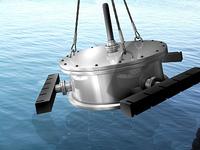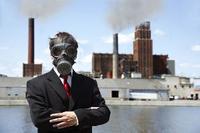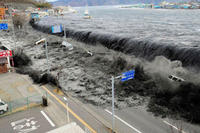-
MIT report warns U.S. electrical grid vulnerable
A new report from the Massachusetts Institute of Technology warns that the U.S. electrical grid is vulnerable to cyberatacks; according to the report, the U.S. electrical grid’s cybersecurity vulnerabilities stem from weaknesses in processes, technology, as well as the actual physical environment
-
-
Shell fears cyberattack on oil infrastructure
Oil executives fear that a cyberattack on critical infrastructure could wreak havoc by destroying facilities or disrupting production
-
-
SCADA systems’ vulnerability key weakness in Smart Grid deployments
The discovery of the Stuxnet worm in 2010 shone a harsh light on the fragility of industrial control systems (ICS), such as supervisory control and data acquisition (SCADA) systems, and has created a new urgency among security vendors and utility managers alike; new research forecasts that investments in ICS security will total $4.1 billion during the years between 2011 and 2018
-
-
DSIT in $12.3 million order for underwater security systems

DSIT Solutions receives its largest order ever for underwater security systems; the contract calls for the delivery of a large number of AquaShield Diver Detection Sonar (DDS) and PointShield Portable Diver Detection Sonar (PDDS) systems to protect offshore oil platforms, coastal energy terminals, and high value vessels against underwater intrusion and sabotage
-
-
Protecting U.S. water supplies

Aside from possible cyberatacks on water utilities, security officials are worried that terrorists could contaminate water supplies with volatile chemicals that can poison thousands of individuals and even cause explosions; DHS warned local water utilities of “backpressure” — a simple tactic terrorists could use to introduce a chemical or biological agent into the water supply and spread it over long distances without immediate detection
-
-
Pace University launches new cybersecurity institute
Last week Pace University announced that it had launched a special institution aimed at helping the United States alleviate the critical shortage of cybersecurity professionals and secure the nation’s data networks
-
-
Senate stalls on easing visa restrictions for highly skilled immigrants
A bill meant to allow more high-skill immigrants from India and China to obtain green cards has been placed on hold by Senator Charles Grassley (R-Iowa) over concerns that it should do more to “protect Americans at home”
-
-
Japan tsunami waves merged, doubling power

Researchers have discovered that the destructive tsunami generated by the March 2011 Tōhoku-Oki earthquake was a long-hypothesized “merging tsunami” that doubled in intensity over rugged ocean ridges, amplifying its destructive power before reaching shore
-
-
Making sure skyscraper foundations stand up to earthquakes
Engineers are preparing to conduct the first rigorous tests of how the steel columns that secure skyscrapers to their foundations stand up during earthquakes, research that could make the towering structures safer — and perhaps less expensive to build
-
-
Strong ground motion shows need to modify building codes
Population growth and scarcity of undeveloped metropolitan land have changed urban land use patterns and placed an increasing number of people and infrastructure in areas susceptible to topographic effects during earthquakes; building codes should take such trends into account
-
-
NERC CIP-compliant grid security reporting tool
NERC CIP Standard is a comprehensive framework of physical and cyber security best practices to safeguard the bulk power system for North America; Skybox Security shows NERC CIP-compliant grid security reporting tool
-
-
U.S. critical infrastructure security response system is broken
Since its inception, DHS has urged states and cities to establish Fusion Centers to collect information from power companies and water utilities about infrastructure-related incidents with national security implications. There are now seventy-two Fusion Centers in the United States. A recent confusion about the causes of disruption of an Illinois water utility pump raised question about the effectiveness of the Fusion Center information collection and reporting system.
-
-
U.K. unveils new cyber defense strategy
The U.K. government last week published its new Cyber Security Strategy; the government said the new strategy sets out “how the United Kingdom will support economic prosperity, protect national security, and safeguard the public’s way of life”
-
-
House Intelligence panel investigates Chinese telecom giants

As Chinese telecom giants Huawei Technologies Co. and ZTE Corp continue to eye the lucrative American market, they have come under increasing scrutiny from U.S. lawmakers who fear their technology could be used by Chinese hackers to steal U.S. secrets; the two Chinese companies are now the subject of a House Intelligence Committee investigation aimed at determining whether they are a threat to the United States
-
-
Sector Report for Monday, 28 November 2011: Infrastructure protection
This report contains the following stories.
-
- All
- Regional
- Water
- Biometrics
- Borders/Immig
- Business
- Cybersecurity
- Detection
- Disasters
- Government
- Infrastructure
- International
- Public health
- Public Safety
- Communication interoperabillity
- Emergency services
- Emergency medical services
- Fire
- First response
- IEDs
- Law Enforcement
- Law Enforcement Technology
- Military technology
- Nonlethal weapons
- Nuclear weapons
- Personal protection equipment
- Police
- Notification /alert systems
- Situational awareness
- Weapons systems
- Sci-Tech
- Sector Reports
- Surveillance
- Transportation
Advertising & Marketing: advertise@newswirepubs.com
Editorial: editor@newswirepubs.com
General: info@newswirepubs.com
2010-2011 © News Wire Publications, LLC News Wire Publications, LLC
220 Old Country Road | Suite 200 | Mineola | New York | 11501
Permissions and Policies
Editorial: editor@newswirepubs.com
General: info@newswirepubs.com
2010-2011 © News Wire Publications, LLC News Wire Publications, LLC
220 Old Country Road | Suite 200 | Mineola | New York | 11501
Permissions and Policies
